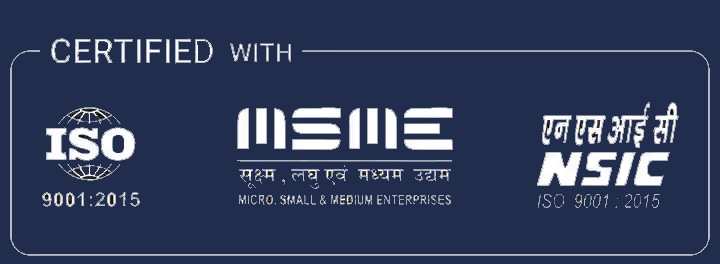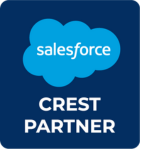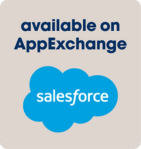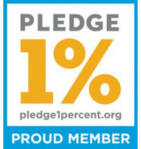How Marketing Automation with HubSpot Can Speed Up Sales Funnel
 Dean Infotech Wednesday, June 11, 2025
Dean Infotech Wednesday, June 11, 2025
In a world where buyers expect instant responses and personalized experiences, traditional sales tactics no longer cut it. Today’s customers don’t wait for a follow-up call — they research, compare, and make decisions faster than ever. To keep up with this pace and stay competitive, businesses need more than manual marketing efforts — they need automation.
Did you know that companies using marketing automation see a 451% increase in qualified leads and a 14.5% boost in sales productivity? (Source: Annuitas Group & Nucleus Research)
This is where marketing automation becomes essential to sales success, not just a nice-to-have. It empowers teams to engage leads at the right time with the right message, while minimizing human error and repetitive work.
Enter HubSpot CRM— a leader in marketing automation that offers a unified platform for marketing, sales, and CRM. With features like automated workflows, smart content, lead scoring, and real-time sales alerts, HubSpot helps businesses accelerate their sales funnels while improving customer experience.
In this blog, we’ll dive into how HubSpot’s marketing automation tools are built to speed up your sales funnel — helping you convert leads into customers faster, more efficiently, and at scale.
Marketing Automation in HubSpot – Key Features
HubSpot’s marketing automation isn’t just a workflow builder — it’s a powerful engine that connects your marketing efforts to tangible sales outcomes. With an intuitive interface and deep CRM integration, HubSpot enables businesses to automate the buyer’s journey with precision, personalization, and performance.
Here are the key features that make HubSpot’s automation stand out:
1. Visual Workflow Builder
HubSpot’s drag-and-drop workflow editor makes it easy to create automated journeys based on user behavior, lifecycle stage, deal status, and more. From sending follow-up emails to rotating leads to the right sales rep, you can automate complex logic without writing a single line of code.
2. Automated Email Campaigns
Design behavior-triggered email sequences that deliver the right content at the right time. Whether it's a welcome series, lead nurturing, or post-demo follow-up — HubSpot lets you automate email outreach without losing that personal touch.
3. Lead Scoring & Segmentation
Automatically score leads based on their behavior, profile, and engagement. Combine this with dynamic list segmentation to ensure your highest-quality leads move swiftly to your sales team while others continue receiving nurturing content.
4. Smart Content Personalization
Deliver hyper-relevant messaging through smart CTAs and content modules that change based on a contact’s location, lifecycle stage, or persona — across email, landing pages, and your website.
5. CRM-Integrated Actions
Since HubSpot’s automation is fully integrated with its CRM, workflows can create tasks, update deal stages, assign leads to reps, notify sales teams, and much more — keeping marketing and sales in perfect sync.
6. Analytics & A/B Testing
Track the performance of each automation — from open rates and clicks to contact progression and revenue influence. Test and optimize your workflows to ensure they’re always improving funnel velocity.
Together, these features empower you to automate intelligently, reduce manual workload, and most importantly — accelerate your lead-to-customer journey.
Also Read : Top Hubspot CRM Integrations for Business
Understanding the Sales Funnel Stages
Before diving into how HubSpot’s automation speeds things up, it's crucial to understand the structure of a typical sales funnel. The funnel represents the journey a prospect takes from discovering your brand to becoming a customer — and it’s divided into three core stages:
🟡 Top of Funnel (TOFU) – Awareness
This is where potential customers first interact with your brand. They may have a problem or need but are still exploring solutions. At this stage, your focus should be on educating and building trust through content like blogs, social media posts, webinars, and lead magnets.
🔹 Key Goals: Attract visitors, generate leads
🔹 Common Tactics: SEO, content marketing, social ads, lead capture forms
🟠 Middle of Funnel (MOFU) – Consideration
Leads in the MOFU stage are now aware of their problem and are actively researching solutions. They’re comparing vendors, downloading resources, attending demos — and engaging more deeply with your brand. This is where nurturing matters most.
🔹 Key Goals: Educate, build interest, and qualify leads
🔹 Common Tactics: Email nurturing workflows, case studies, product videos, comparison guides
🔴 Bottom of Funnel (BOFU) – Decision
Leads here are sales-ready. They’ve done their research and are deciding who to buy from. Your goal now is to remove any friction and make the buying process seamless.
🔹 Key Goals: Convert leads into customers
🔹 Common Tactics: Free trials, consultations, live demos, pricing pages, sales calls
A well-defined funnel allows you to strategically apply automation at every stage — delivering the right content and action when it matters most. HubSpot gives you the tools to orchestrate this journey seamlessly, ensuring no lead slips through the cracks.
Where Sales Funnels Get Stuck: Common Bottlenecks
A well-structured sales funnel is only effective if prospects continue moving forward. But in reality, many leads get stuck or drop off due to operational friction, timing mismatches, or misaligned handoffs between marketing and sales. Below are the most critical bottlenecks businesses face — and why automation in HubSpot is uniquely positioned to resolve them.
Slow Lead Response Times
According to a Harvard Business Review study, companies that respond to leads within one hour are seven times more likely to qualify them. Yet, many organizations still rely on manual follow-ups — which often means missed windows of opportunity. A delay of even a few hours can result in lost momentum and trust.
Automation Advantage: HubSpot can trigger immediate, context-aware responses (emails, SMS, or task assignments) based on lead actions like form submissions or content downloads — ensuring no warm lead goes cold.
Premature Handoff to Sales
When marketing sends unqualified or under-nurtured leads to the sales team, it not only wastes time but also undermines confidence in lead quality. This is especially common when lead scoring is subjective or not implemented at all.
Automation Advantage: HubSpot allows you to implement behavior-based lead scoring and enforce lifecycle stage criteria before passing leads to sales. This ensures alignment and readiness, improving close rates and shortening the sales cycle.
Ineffective Nurturing Between Stages
Many leads engage initially but then stall in the middle of the funnel due to a lack of targeted follow-up. Generic drip campaigns or poorly timed outreach often result in disengagement — especially when competitors are delivering more relevant content.
Automation Advantage: With HubSpot’s smart workflows and segmented content delivery, you can automate highly tailored nurturing based on personas, buying stage, or specific interaction history — maintaining engagement and forward movement.
Operational Drag from Manual Processes
Manual task assignment, data updates, or follow-up scheduling causes internal delays and inefficiencies. When sales reps or marketing managers spend time on admin work, the overall sales velocity drops.
Automation Advantage: HubSpot automates backend processes like deal stage progression, contact owner assignment, internal task creation, and email sequencing — removing friction and letting your team focus on high-value activities.
Lack of Visibility Into Drop-Off Points
Without clear analytics tied to your funnel stages, it’s difficult to identify where and why leads are exciting. Many teams only react once performance declines, rather than proactively fixing what’s broken.
Automation Advantage: HubSpot’s funnel reports and workflow analytics offer real-time insights into where contacts are getting stuck or dropping off. This data allows for continuous optimization of touchpoints, workflows, and content.
By identifying and eliminating these bottlenecks with the right automation strategy, businesses can unlock measurable improvements in lead progression, sales velocity, and overall revenue performance.
How HubSpot Automation Accelerates Each Funnel Stage
Marketing automation becomes truly valuable when it’s mapped thoughtfully across every stage of the sales funnel. HubSpot not only enables this — it enhances it through CRM-connected intelligence, behavior tracking, and dynamic workflows. Here's how automation in HubSpot sharpens execution at every layer of the funnel.
1. Top of Funnel (TOFU): Auto-Nurturing Cold Leads
At the awareness stage, the primary challenge is scale. You’re generating traffic, capturing leads, and trying to stay top of mind — but only a small fraction of these leads are sales-ready. Most need to be educated, engaged, and nurtured until they’re ready to take the next step.
HubSpot’s Automation Impact:
- Automatically enroll new leads into educational workflows based on their interests or conversion point (e.g., eBook download vs. webinar signup).
- Use dynamic email sequences to deliver consistent value without relying on manual outreach.
- Trigger nurturing based on behavior — such as revisits, blog reads, or interaction with lead magnets.
- Score and qualify leads in the background, allowing only engaged prospects to move forward.
Result: You stay engaged with leads at scale, while only investing sales time in those showing early intent.
2. Middle of Funnel (MOFU): Personalized Email Workflows
The consideration stage is where most deals stall. Prospects are actively comparing solutions and evaluating fit. This is where timing, messaging, and relevance become critical — and where most manual follow-ups fail.
HubSpot’s Automation Impact:
- Design advanced workflows that adapt based on engagement history (e.g., opened X but didn’t click Y = send alternative offer).
- Send case studies, product comparisons, testimonials, or FAQs tailored to the lead’s industry or interest.
- Adjust communication frequency based on lead score or intent signals — without overwhelming them.
- Trigger internal alerts to sales when engagement thresholds are met (e.g., multiple email opens or visits to pricing pages).
Result: Prospects receive the right information at the right moment — keeping them warm, informed, and moving closer to a decision.
3. Bottom of Funnel (BOFU): Sales Notifications & Lead Handoff
At the decision stage, speed and precision can make or break a deal. The handoff between marketing and sales must be seamless, timely, and rooted in context. Leads are evaluating vendors, seeking consultations, or requesting quotes — they expect a fast and relevant response.
HubSpot’s Automation Impact:
- Trigger internal notifications when a lead exhibits high-intent behavior (e.g., books a demo, views pricing multiple times, replies to emails).
- Automatically assign the lead to the right rep based on territory, product interest, or deal size.
- Create or update deals in the pipeline with contextual notes from the prospect’s journey.
- Initiate personalized final-stage sequences such as demo prep materials, proposal documents, or limited-time offers.
Result: Sales teams engage faster, with full visibility into the lead’s behavior, intent, and history — increasing close rates and shortening sales cycles.
Bottom Line:
HubSpot’s automation doesn't just reduce manual work — it strategically accelerates conversion by delivering the right message, at the right time, through the right channel, across every stage of the funnel.
Tracking Funnel Speed & Success Metrics in HubSpot
Automation isn’t just about efficiency — it’s about outcomes. To ensure your workflows are truly accelerating your sales funnel, you need visibility into how leads are progressing, where they’re stalling, and which automations are actually driving revenue.
HubSpot makes this possible with built-in funnel reporting, lifecycle tracking, and detailed performance analytics, all within a unified dashboard. Here's how you can monitor and optimize funnel velocity with precision.
1. Funnel Progression Reports
HubSpot’s lifecycle stage funnel reports let you track how contacts move from one stage to the next — from Lead to MQL, SQL, Opportunity, and Customer. You can visualize:
- Conversion rates between each stage
- Average time spent in each stage
- Volume trends across time
This helps pinpoint stages where deals are slowing down or dropping off — enabling targeted fixes to workflows or touchpoints.
2. Workflow Performance Metrics
Every HubSpot automation workflow includes detailed analytics to assess:
- Enrollment numbers
- Email open and click-through rates
- Goal completions (e.g., booking a demo, submitting a form)
- Drop-off points within the sequence
You can A/B test workflows or reconfigure conditions based on actual lead behavior, not assumptions.
3. Lead Scoring and Engagement Insights
Automated lead scoring in HubSpot updates in real time based on a contact’s actions — email engagement, page visits, form submissions, or inactivity. By tracking score trends, you can assess whether your automations are effectively warming up leads or if additional touchpoints are needed.
4. Deal Pipeline Velocity Tracking
HubSpot’s sales pipeline tools allow you to track:
- Time to close (average deal duration)
- Stage-by-stage movement
- Win/loss ratios by source or workflow
- Automation influence on deal acceleration
When connected with marketing automation workflows, this data shows exactly which campaigns are generating revenue — not just engagement.
5. Custom Dashboards & Attribution Reporting
With HubSpot’s custom dashboards, you can build executive-level views to track KPIs such as:
- Marketing-qualified lead (MQL) velocity
- Funnel conversion by campaign
- Sales follow-up SLA compliance
- Automation-influenced revenue
Multi-touch attribution also gives you clarity on which automated emails, forms, or landing pages are contributing to closed deals.
Conclusion
In today’s competitive landscape, speed, relevance, and personalization are no longer optional — they’re decisive. Marketing automation, when strategically applied across the sales funnel, becomes more than a productivity tool; it becomes a revenue accelerator.
HubSpot offers businesses a unified platform where automation, CRM, content, and analytics come together to create a seamless buyer journey. From auto-nurturing cold leads at the top of the funnel to triggering high-intent sales handoffs at the bottom, every automation touchpoint is an opportunity to reduce friction and increase conversion.
What sets HubSpot apart isn’t just the breadth of its features, but the depth of its intelligence — enabling your team to make faster decisions, deliver more personalized experiences, and shorten the path from lead to customer.
If your sales funnel feels slow or inconsistent, it’s not just a sales problem — it’s an automation opportunity.
Ready to accelerate your funnel with HubSpot?
Let’s talk strategy — and start building a smarter, faster, conversion-ready system.








Comment